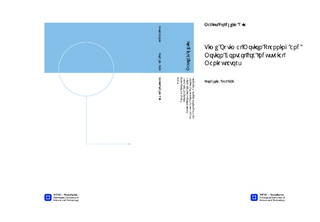Time Optimal Motion Planning and Motion Control for Industrial Manipulators
Master thesis
Permanent lenke
http://hdl.handle.net/11250/261336Utgivelsesdato
2014Metadata
Vis full innførselSamlinger
Sammendrag
The ever growing need to make industry more efficient and safe has introduced robots as potential replacements for manual labour. Even minor increases in productivity can generate substantial profit in production, which makes time optimal control one of the demanding subjects in robotics. In the developement of robotic systems, two major aspects can be distinguished: motion planning and motion control. The purpose of motion planning is to generate a set of desired trajectories (profiles) for each actuator of the system on a path. The goal of the motion controller is to achieve accurate and robust tracking of the given profiles. In this thesis we have investigated these two aspects with regards to time optimal motion for paths that are exactly known in advance.We assigned velocity profiles using a method called path constrained trajectory planning on a set of case paths. The resulting motion planning profiles were simulated for an industrial robot manipulator, ABB IRB140. The dynamics of the robot were modeled, and a state-of-the-art orbital stabilization based control structure was implemented. The motion planning and simulations with motion control resulted in faster periods of motion than what could be obtained with the commercial planner from the robot producer company, ABB.In literature, velocity profiles are usually given with velocity set to zero at the initial and final points for given paths. When connecting two path segments into new and longer paths, it would be desireable to keep some velocity through the connection point, to achieve near time optimal motion periods. We have combined a set of paths and analyzed the results from simulations when applying various velocity assignments at the connection points. When connecting paths that are well geometrically conditioned, we found that we can set boundary level velocity through the connection point and still track the desired trajectories with high accuracy. This was examplified with a horizontal circle connected to a vertical circle, which performed with a maximum deviation of 0.005 radians from its desired trajectory. For sharp corner connection points, tracking fails. A possible solution was found by implementing a transition phase to round off corners. This was examplified for a connection point with a 90 degree corner using boundary level velocity profiles, and it was shown how to tune the transition phase to obtain better results.
